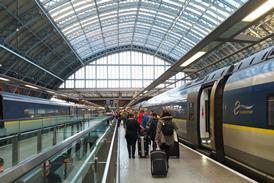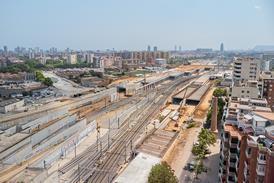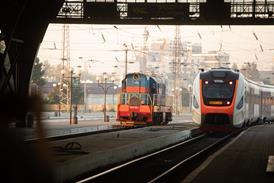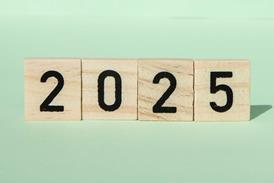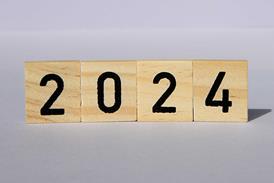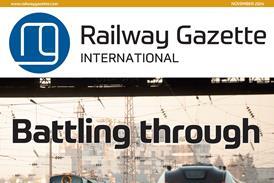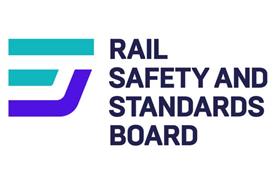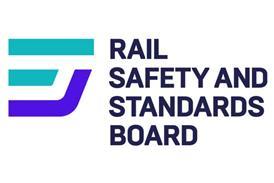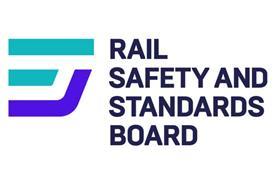INTRO: A 1 km test track in Wien is being used to trial the second generation of cars for the city’s expanding U-Bahn. Ralf Roman Rossberg reports that they also the first trains to be built using the modular principles in the Siemens MoMo concept
WHEN WIEN launched U-Bahn services between Karlsplatz and Reumann-platz in February 1978, passengers quickly dubbed the trains the ’Silver Arrows’. With 20 or more years’ service clocked up on a network now extending to 58·6 route-km with 82 stations, the Silver Arrows are falling due for replacement. Siemens has been picked as supplier of the second generation units, and a prototype for a fleet of 60 six-car trains was delivered in March.
Trials are now under way on a 1 km test track located in the Erdberg workshops complex at the eastern end of Line U3. Acceptance trials should lead to an operating certificate being granted, which would also pave the way for the main contract worth DM750m to be signed with Siemens.
Wiener Linien, the metro, tram and bus operating subsidiary of the Wiener Stadtwerke - now merely a holding company - expects to have finance in place for the first 20 trains by 2002, which would allow delivery of the production fleet to start in 2004. All 60 sets are to be delivered by 2013, permitting replacement of the Silver Arrows and the launch of more services as the network expands.
Steady expansion
Kaiser Franz Josef said 100 years ago that ’I will not have my Viennese people travelling underground’, thereby holding back early plans for an U-Bahn in the Austrian capital. Not until 1968 was the first line approved, since when the network has grown steadily. The most recent extension was a section of Line U3 opened in December 1998 between Johnstrasse and Ottakring. The next is planned for December 2 this year when Line U3 will be lengthened from Erdberg to Simmeringer Landstrasse. Around 20 km will be added by 2009, with Line U2 due to reach Stadion from Karlsplatz in 2004, Line U1 arriving at Leopoldau from Kagran in 2005, and Line U2 crossing the Donau in 2008 to serve Aspern.
Line U2 was built with stations whose platforms could only accommodate four cars. By 2009 they will have been rebuilt for six cars - all the new trains will be formed of four power cars enclosed by a control trailer at each end. The Silver Arrows were all built as two-car sets, meaning much space is wasted by the five unused cabs in a six-car train.
Billed as the first train applying the standardisation principles in Siemens’ MoMo concept (RG 7.99 p65), they are being assembled at the former SGP works in Wien where the group has concentrated its heavy rail passenger activities. Siemens as main contractor also supplied the converters, while Elin and Adtranz provided the water-cooled traction motors, as well as air-conditioning and the inverter equipment for the auxiliaries. Bogies came from Bombardier, doors from IFE and door controls from Kiepe. Transelektronik supplied the passenger information system.
TABLE: Main data for Wiener U-Bahn MoMo prototype
Train length m 111·2
Formation T+M+M+M+M+T
Overall width mm 2850
Floor height above rail top mm 1000
Maximum speed km/h 80
Continuous power rating kW 2560
Seats 260
Standing capacity at 6/m2 1100
Power supply 750V DC third rail
Weight tonnes 162·6
CAPTION: The second generation cars for the Wiener U-Bahn were unveiled on June 28 at the Siemens works
CAPTION: Passengers will be able to walk through all six cars, helping to ease overcrowding and enhancing security
Testing of 16 VAL208 rubber-tyred two-car trainsets for the Rennes mini-metro is under way at the Siemens works in Wien. Rennes city councillors and staff from Siemens subsidiary Matra Transport International celebrated the arrival of the first car in its future home on July 13. The 9.5 km line with 15 stations is due to open in early 2002

